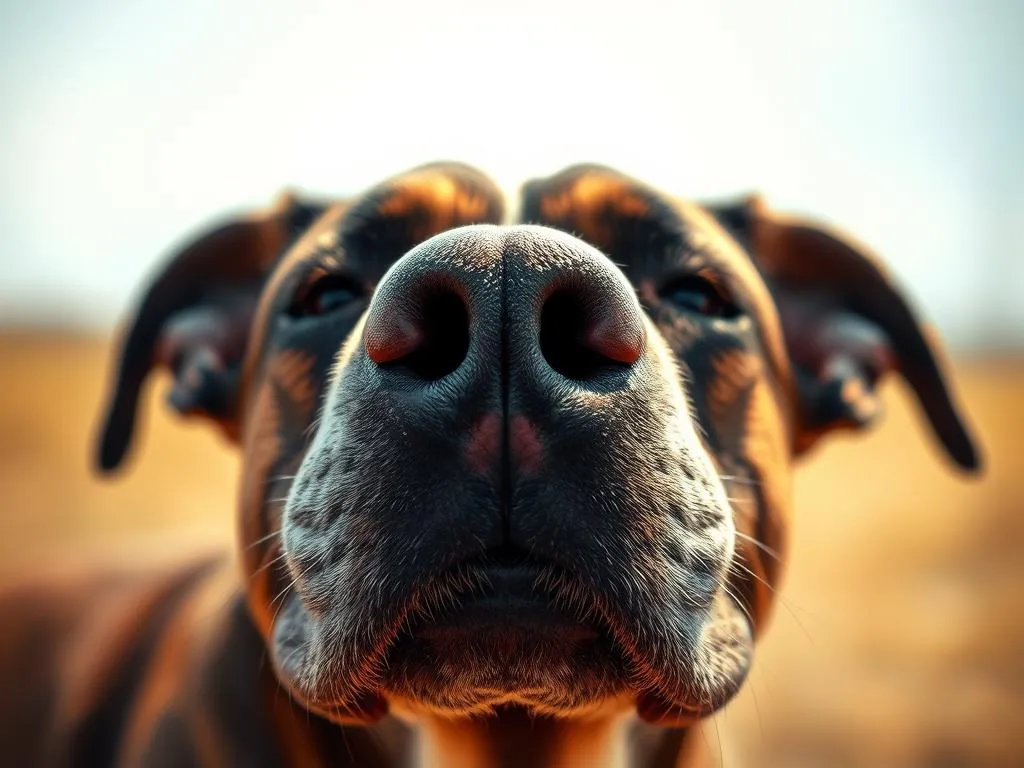
Maintaining the health of our canine companions is essential, not only for their well-being but also for the joy they bring to our lives. While dog owners often focus on regular vet visits, vaccinations, and diet, there’s another important aspect of dog health care that deserves attention: sun protection. Many might wonder, can dogs’ noses get sunburned? The answer is yes, and understanding the implications of sun exposure on our dogs is crucial.
Understanding Canine Anatomy
Dog Skin Structure
Dog skin has a different structure compared to human skin. While humans have a single layer of skin with a robust protective barrier, dogs have several layers, including the epidermis, dermis, and subcutaneous layer. The presence of fur plays a significant role in protecting dogs from harmful UV rays. However, not all dogs have thick fur, and many have areas of exposed skin, particularly around the nose, ears, and belly.
Sensitivity of Dog Noses
A dog’s nose is unique and serves many functions, including regulating temperature and enhancing their sense of smell. The skin on a dog’s nose is thin and often lacks pigmentation, making it more susceptible to sunburn. Dogs with light-colored or thin fur are particularly at risk, as their skin offers less protection against UV exposure. Factors such as breed, age, and overall health can also influence a dog’s sensitivity to the sun.
The Risks of Sun Exposure for Dogs
UV Radiation and Its Effects
UV radiation from the sun can have serious effects on a dog’s skin, similar to those experienced by humans. Long-term exposure to UV rays can lead to skin damage, including sunburn and an increased risk of skin cancer. Statistics indicate that skin cancer is becoming more prevalent in dogs, with certain breeds being significantly more susceptible. Understanding the risks associated with sun exposure is crucial for responsible pet ownership.
Vulnerable Areas
Certain areas of a dog’s body are more prone to sunburn than others. The nose, ears, and belly are particularly vulnerable due to their thinner skin and lack of fur coverage. Dogs with light pigmentation are especially at risk, as they have less melanin to protect against harmful UV rays. By identifying these vulnerable areas, dog owners can take proactive measures to protect their pets from the sun.
Symptoms of Sunburn in Dogs
Recognizing Sunburn
Just like humans, dogs can exhibit symptoms of sunburn. Common signs include:
- Redness: The affected area, particularly the nose, may appear reddened.
- Peeling: Skin may start to peel, similar to a sunburn in humans.
- Swelling: The area may swell and become sensitive to touch.
If you notice any of these symptoms in your dog, it’s essential to take action.
Long-Term Effects of Untreated Sunburn
Failing to address sunburn in dogs can lead to severe long-term effects, including an increased risk of skin cancer. Chronic sun exposure can cause changes in the skin that predispose dogs to tumors and other serious health complications. Therefore, recognizing and addressing sunburn in its early stages is crucial for your dog’s health.
Preventing Sunburn in Dogs
Protective Measures
Preventing sunburn in dogs requires a multi-faceted approach. One of the most effective measures is providing shade and shelter when your dog is outdoors. Whether it’s a covered patio, a doghouse, or simply a shady tree, ensuring your dog has a place to escape the sun can significantly reduce their risk of sunburn.
Additionally, using dog-safe sunscreens can provide extra protection for vulnerable areas, particularly the nose. Look for products specifically designed for pets, as human sunscreens may contain harmful ingredients.
Best Practices for Outdoor Time
Timing outdoor activities is crucial in preventing sunburn. Avoiding peak sun hours, typically between 10 AM and 4 PM, will help minimize your dog’s exposure to harmful UV rays. Engaging in playtime early in the morning or later in the afternoon can keep your dog safe while still allowing for fun outdoor activities.
Monitoring your dog during outdoor play is also essential. Keep an eye on them for signs of overheating or sunburn, especially if they are playing in direct sunlight for an extended period.
Treating Sunburn in Dogs
First Aid for Mild Sunburn
If you suspect your dog has a mild sunburn, there are several first aid steps you can take:
- Cool Compress: Apply a cool, damp cloth to the affected area to soothe the skin.
- Hydration: Ensure your dog has access to fresh water to help with hydration.
- Topical Treatments: Consider using aloe vera gel or other soothing creams specifically formulated for pets to alleviate discomfort.
Always consult your veterinarian before applying any treatments to ensure they are safe for your dog.
When to Seek Veterinary Care
In some cases, sunburn can require professional intervention. If you notice severe symptoms such as extensive redness, blistering, or signs of infection (like pus or increased swelling), it’s vital to contact your veterinarian immediately. They can provide the necessary care and possibly prescribe medication to alleviate pain and promote healing.
Importance of Regular Veterinary Check-ups
Routine Health Assessments
Regular veterinary check-ups play a critical role in maintaining your dog’s health and well-being. During these visits, veterinarians can perform routine skin examinations, helping to identify any sun-related issues early on. This proactive approach can make a significant difference in your dog’s long-term health.
Vaccinations and Preventative Care
Vaccinations are another essential component of dog health care. Keeping your dog up-to-date with vaccinations not only protects them from various diseases but also contributes to their overall health. Regular health screenings can help catch any potential issues, including those related to sun exposure, before they become severe.
Additional Considerations for Dog Owners
Breed-Specific Risks
Certain dog breeds are more susceptible to sunburn due to their skin and coat characteristics. Breeds with short hair or minimal undercoats, such as Greyhounds or Whippets, are at higher risk. Similarly, breeds with light pigmentation, like Dalmatian or Boxer, may also require extra precautions when it comes to sun exposure. Understanding these risks can help owners take proactive measures to protect their furry friends.
Lifestyle Adjustments
As dog owners, we need to be mindful of the climate and environment in which we live. In areas with intense sun exposure, lifestyle adjustments may be necessary to keep dogs safe. This can include scheduling walks during cooler times of the day, ensuring access to shaded areas, and being vigilant about sunburn symptoms.
Conclusion
In summary, can dogs’ noses get sunburned? Absolutely. Understanding the risks associated with sun exposure and recognizing the symptoms of sunburn is crucial for responsible pet ownership. By taking preventive measures, providing appropriate care, and ensuring regular veterinary check-ups, we can protect our dogs from the harmful effects of the sun. Let’s commit to being proactive in safeguarding our pets, ensuring they enjoy a healthy and happy life under the sun.









